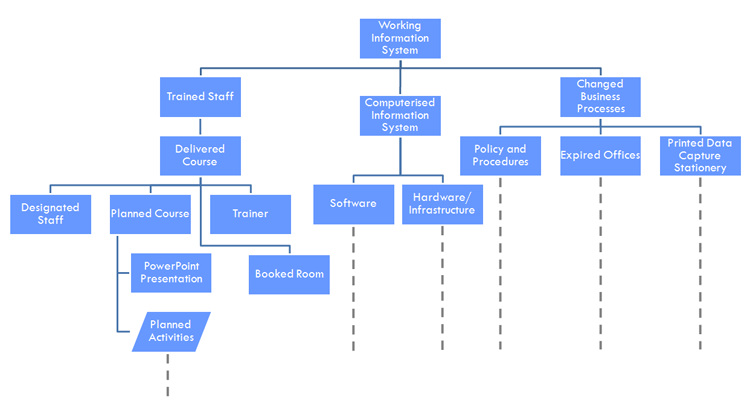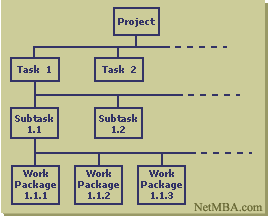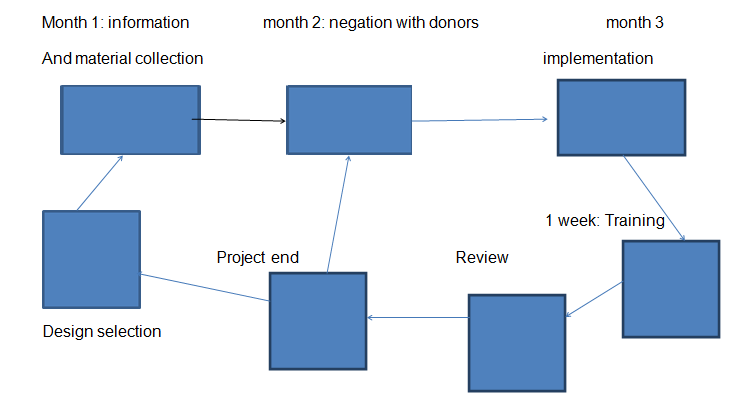Executive Summary
This report provides a comprehensive personal reflection for the plan set for the STEPS project at the UoB. Started in December 2013 and completed on May 1 2014, STEPS is a project that seeks to enhance students’ access to funding for improving their experience in a career.
It focuses on introducing, changing and enhancing various aspects of the student experience that the student community at the University of Bedfordshire (UoB) identifies as ripe for change in the modern times.
The idea is to foster original, inventive and pioneering approaches as well as mainstream ideas for a student funding project. It seeks to address all aspects of student to experience as they move through the university system, beginning with outreach through school transition to the alumnus status.
Students are the partners in the project while the application for the funds is open to individual students, individual alumni, and groups of students and student-staff collaborations. In addition, where possible, the project must be initiated and co-created and co-led by students.
Product scope and product management
The benefits of including Project Product Description
Project product description is the initial step in defining the requirement for the beneficiaries of the project funding (the clients). This description is based on the specific needs of the students, alumni and student-staff groups, who are the client of the project. Thus, we need a detailed description of the needs of every individual and groups targeted by StEP.
The decision to initiate and establish the project was based on the realization that students undergo various kinds of stress and problems throughout the course and even after leaving the university, especially prior to obtaining their desired employment.
Therefore, the project product description provides an in-depth analysis and explanation of the funding services (product) that the project will offer to help students make a significant impact on their experience as they move through the university system and after leaving the institution (Clark 2009).
The section communicates the link between the problems faced by students and the possible methods for solving these problems and enhances the experience (Packendorff 2005).
Secondly, a project product description is an important input to the process of iteratively developing the business case.
With a good and informed understanding of the capacity required by the funding project, the project managers and leaders are in a better position to develop a comprehensive definition and understanding of the most suitable output that is expected from the project in the form of services meant to support the student experience (Packendorff 2005).
Thirdly, the project product description for StEPs project is a high level overview of what the project has been set to provide to the students.
Our objective in developing a comprehensive product description for StEPs is based to provide adequate and concise information so that the managing team develops a clear scope and limits. The scope limits define the framework in which the managing team describes a detailed component product description as well as facets during the processes of planning and implementation.
Therefore, we have used a well-defined project product description in the StEPs project to define the scope of the project. It also allows for change during the development and implementation of the project and a new baseline to be set based on the changes. In addition, the StEPs product description defines the quality expectations of the students.
Within this context, it has been noted that students expect to develop knowledge, skills and experience they need to fit into their desired career and fields. It is expected that students obtain these skills through interaction with the education system, which comprises of both the academic knowledge and contact with colleagues, staff and corporate fraternity that works closely with the university (Archibald 2007).
Fourthly, the project product description for StEPs has been sued to define the acceptance criteria, responsibilities as well as a method for the funding services offered to students and student groups. Within the scope of the project, there are limitations for funding, beyond which the project is not in a position to provide its services.
For instance, funding for mega-projects that aim at developing huge business relationships involving the staff or other parties in partnership with the student cannot be met, despite having a good idea of making an impact on student experience in and out the university.
Finally, the product description for StEPs project has been used to state what is important in the least amount of space and time needed so that we can clarify the requirements for a good understanding of the services the project is offering.
The benefits of including a Product Breakdown Structure in StEPs
Our StEPs project has a comprehensive product breakdown structure (PBS) based on the model described by PRINCE2 (Kerzner 2003). It is a hierarchical structure that seeks to break down the final product in its basic and specific constituent sub-products.
It helps the managing and planning team to think the products needed to build the final project product. It also helps the planning team to clarify all the required work in the creation of the final set of services and products (Lewis 2000).
Within the StEPs project, PBS has been used as an iterative component that works in conjunction with the process of developing the product description, user scenarios, product flow chart and acceptance tests.
PBS helps us to visualize the StEPs product and its components, which helps us to improve the communication as well as reduce misunderstandings when developing and managing the project. In addition, it helps us break down the product into its sub-components in order to allow us to identify components that have value as early as possible during the development process (Packendorff 2005).
In turn, this gives us the capacity to determine and define the components that can be developed in the later stages of the project development cycle. In addition, the PBS works in conjunction with the product flow diagram in identifying the order component products that should be built (Archibald 2007).
The benefits of including Product Descriptions in StEPs
We have used a product description as part of the product-based planning for the StEPs project in order to establish the criteria for client acceptance, which will help us in identifying the student groups or individuals that meet the required conditions for funding. In addition, product descriptions act as checklists for the deliverables of our project at StEPs.
Reflection on the Business case
The business process for our project StEPs is primarily Web-based. We have developed a comprehensive, effective and user-friendly website for StEPs project through which the project management and planning team will communicate and relate with the student clients. The web-based business has a number of benefits for the entire project since it was initiated in December 2013.
First, a web-based business allows the StEPs project to run throughout the day, week, month and year because it provides us with a global access, where the clients have the freedom to visit the website and interact with the project using their user-end (Snyder & Parth 2006). In addition, our project benefits from the improved client service provided by the web-based business technology that allows a large degree of flexibility.
Since there is no need for clients to learn the project team’s working hours, they are free to visit the website at any time, place and position throughout the year. Students at the UoB are required to have personal computers as one of the learning materials at the institution. In addition, the university has implemented free access to the internet through WiFi and LAN, which are available at almost any position within the institution.
Thus, using a web-based business for StEPs project will ensure that we save on costs. For instance, we only need a small and simple office where the project management team operates with little interaction with the client and client groups because students find it easy to communicate with us through the internet and on our website.
Thirdly, the business model allows us to carry out business in a faster and more coordinated manner. For instance, the process of communicating with the clients at the university is easy and fast since it allows clients to either leave a message on their user profiles developed within the website or fill in an online application form for the funds.
In this case, the project team will only be verifying these messages and forms and communicating with the clients. It also makes negotiation and delivery of the funds easy because the process of verification of the fund applications is done through the system and communication within the departments within the project done instantly.
It reduces the need for students to make long queues in form of the small office we have established, which would only interfere with our and their programs (Archibald 2007).
It is also worth noting that the web-based business case we have employed at StEPs is an example of systems that are increasingly enhancing professionalism in the workplace, which gives students the capacity and experience to work as professionals when they leave the institutions. Thus, it also contributes to the overall objective of improving the student experience and skills needed in their career.
Nevertheless, the web-based business we have adopted at our StEPs project has some costs and limitations. For instance, it is relatively costly to implement and develop, given that comprehensive technologies are needed. We have incurred costs in designing, developing, implementing and maintaining the website. We are required to seek the services of professional web developers outside the university in order to enhance its functioning.
In addition, we run the risk of information siphoning, hacking, eavesdropping and viral attacks, given that internet-based business in the modern times is also under the same threats. We also face the problem of frequent system failure, where the website or our support service face technical problems that partly or completely affect our ability to provide services to the students (Becker, Kugeler & Rosemann 2003).
Nevertheless, the project will be successful because the clients are the students or the alumni, who have at least some knowledge and skills in information and communication technology. We do not expect any student to find it difficult dealing with us, given that our website is not only working throughout the day, but also because it has a number of features that make it user friendly.
For instance, the communication process is based on customized mailing system and chat system. Secondly, the process of filing in the fund application forms for StEPs is only based on reading and clicking on items using a mouse device, which reduces the need for paperwork.
We also expect the project to succeed because the business model is convenient for student clients, given that the target is highly homogenous, with similar or related needs (Atkinson 2009).
For example, the main objective of the project is to provide funds that will help students and their groups develop strategies seeking to improve their experience during the school days and when going to seek for employment. In other words, the primary objective is to enhance career development. Since this is a common need for all students at the university, the project will succeed beyond the expected limits.
Time management
As aforementioned, the project started in December 2013 and was completed on 1st May, 2014. It went on as planned, with the planning and implementing teams working in conjunction with each other towards a successful completion of the project. However, we had specific plans for adjusting the program in case any problem arose.
For instance, if the project was required to be complete one week before the due date (May 1 2014), we had planned to shorten the training step as shown in the Network Diagram. In this case, we expected to ensure that the program workers and the pilot study were conducted with a short time, reducing each to one week.
This would mean that the program would be completed one week before the impromptu deadline and two weeks before the expiry of the official deadline. To achieve this, we had planned to ensure that a comprehensive communication process was available, with all the team members receiving timely information about any changes.
Stakeholder management
Stakeholders are parties or individuals who are affected or are likely to be affected, by any action, project or act that an organization takes. Using this definition, we identified three main stakeholders in the project. First, the financiers of the funds were recognized as the main stakeholders.
In the project, financiers were organizations that agreed to fund the program, expecting to gain from the services provided by the graduating students who are absorbed in their workforce. Secondly, the management team is a major stakeholder because they manage the project on a daily basis.
Thirdly, the students and their groups are the target clients for the project, and their acceptance or decline of the funds will have a direct impact on the project.
Risk Management
The project runs under a number of risks, which must be mitigated to avoid failure. First, the student’s inability to repay the funds due to misappropriation once they receive the money is a major risk, which might crumble the project.
We had plans to mitigate this risk by involving the university senate and disciplinary board, which in turn sought to ensure that student who misuse the funds are made to pay through the existing laws and regulations. Secondly, the project faced the risk of poor funding. To mitigate this risk, we worked with more than five corporate bodies and NGOs that are ready to increase their contributions once any of them withdraws.
Thirdly, StEPs faced the risk of failure of students to apply for the funds due to negative perceptions of our objective. To mitigate this risk, we developed effective awareness programs that weeks before the project was initiated, which taught students the need to take the funds, the processes involved and the objective of the project.
References
Archibald, RD, 2007, Project team planning: the need, methods and benefits. In Dimensions of Project Management , Springer, London
Atkinson, R, 2009, “Project management: cost, time and quality, two best guesses and a phenomenon, its time to accept other success criteria”, International journal of project management, vol. 17, no. 6, no. 337-342.
Becker, J, Kugeler, M & Rosemann, M, 2003, Process management: a guide for the design of business processes, OUP, London, UK.
Clark, KB, 2009, “Project scope and project performance: the effect of parts strategy and supplier involvement on product development,” Management science, vol. 35, no. 10, pp. 1247-1263.
Kerzner, H, 2003, Project Management: A Systems Approach to Planning, Scheduling, and Controlling, Wiley, London, UK.
Lewis, JP, 2000, The project manager’s desk reference: A comprehensive guide to project planning, scheduling, evaluation, and systems, Wiley, London, UK.
Packendorff, J, 2005, “Inquiring into the temporary organization: new directions for project management research”, Scandinavian journal of management, vol. 11, no. 4, pp. 319-333.
Snyder, C & Parth, F, 2006, Introduction to IT Project Management, Springer, London.
Appendix

Figure 1: a Product Breakdown Structure in StEPs

Figure 2: Work Breakdown Structure for StEPs

Figure 3: Network Diagram after adjustment